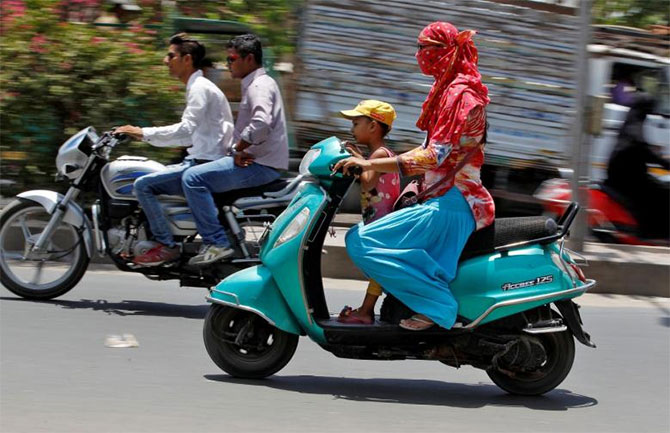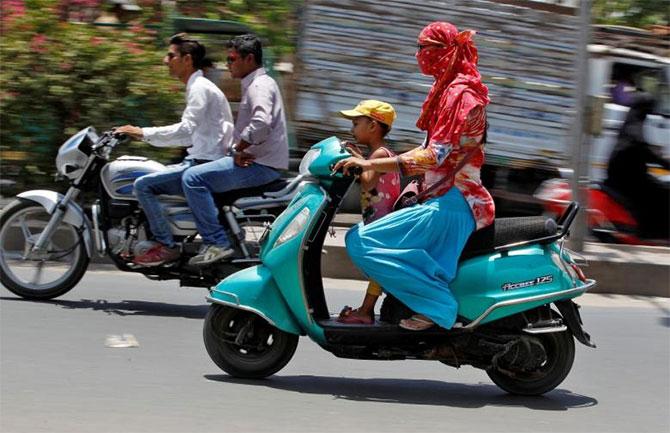Two-wheeler exports from India skid nearly 18% in FY23
Two-wheeler exports from India fell by 17.8 per cent to 3.65 million units in 2022-23 (FY23), according to data released by the Society of Indian Automobile Manufacturers (Siam) on Thursday.
This decline is due to a rise in global inflation and the weakening of economies and currencies in key export markets of Africa, Latin America (LatAm), and South Asia.
In contrast to FY23, two-wheeler exports from India jumped 35.4 per cent to 4.44 million units in 2021-22 (FY22).
Vinod Aggarwal, president, Siam, told the media that the decrease in exports in FY23 is a “cause for concern”.
He said that in some countries, the lack of ample foreign exchange reserves had led to a decrease in imports.
India’s largest two-wheeler exporter, Bajaj Auto, saw its exports decline 25.45 per cent to 1.64 million units in FY23, according to Siam data.
TVS Motor saw its two-wheeler exports decline 16.06 per cent in FY23.
While their sales outside India declined, Indian two-wheeler makers saw their domestic sales increase 16.88 per cent to 15.86 million units in FY23.
Domestic car sales also jumped 26.7 per cent to 3.89 million units in FY23, according to Siam.
Saket Mehra, partner, Grant Thornton Bharat, said Africa and LatAm are the two most important export markets for Indian two-wheeler companies.
Certain countries in West Asia (Egypt and Iran, for instance) and some in South Asia (including Bangladesh, Sri Lanka, and Nepal) are the other key export markets.
Mehra said there has been a significant increase in global inflation (from 4.7 per cent in 2021 to 8.7 per cent in 2022, according to the International Monetary Fund).
This has led to a decline in global consumption, resulting in lower demand for two-wheelers.
“This was one of the pertinent reasons for reduced demand,” he inferred.
Additionally, the recent appreciation of the US dollar has led to currency depreciation in most emerging economies, further impacting their imports negatively, observed Mehra.
He said that in the West Asian and North African regions, consumer price inflation reached 9.9 per cent, higher than the global inflation level, due to “military disturbances in Ukraine and related sanctions”.
The average (core) inflation rate in LatAm also sustained at around 8 per cent because of high energy and food prices, he added.
He said that at a global level, the levels of inflation have likely peaked but will remain elevated in the short term.
In the two-wheeler space, motorcycle exports have fallen; scooter exports have, however, risen.
According to the automotive industry body, scooter exports jumped 18.97 per cent to 416,935 units in FY23.
Motorcycle exports fell 20.87 per cent to 3.23 million units.
Rajat Mahajan, partner, Deloitte India, said that the drop in two-wheeler exports may be explained by economic factors and FY22’s high baseline.
“Customers in a few export markets are also switching to used bikes or deferring purchases.
“The primary reasons are rising inflation (double-digit in Africa and a few LatAm countries), rising oil and commodity prices, weakening of the local currency compared to the US dollar, uncertainty on import duties, and local regulations.
“However, the industry is hopeful that inflation and currency bumps will be short-lived, and demand will stabilise in the years to come,” he added.
In January, Rakesh Sharma, executive director at Bajaj Auto, had said in an investor conference call that the company’s largest export market, Nigeria, would continue to be depressed and volatile until the effects of its demonetisation settle and the elections get over in February, leading to a peaceful transition to the new government.
“By and large, we estimate it will take perhaps until May or June for normalcy to start returning, first in LatAm, then Africa,” he noted.
He said the demographic is young in Africa, and the road network increasing.
“Urbanisation is on the rise. The public transport network is very poor.
“All those drivers that point to doubling the penetration in the next five to seven years are very much present.
“We have got a great market position,” said Sharma.
Source: Read Full Article


